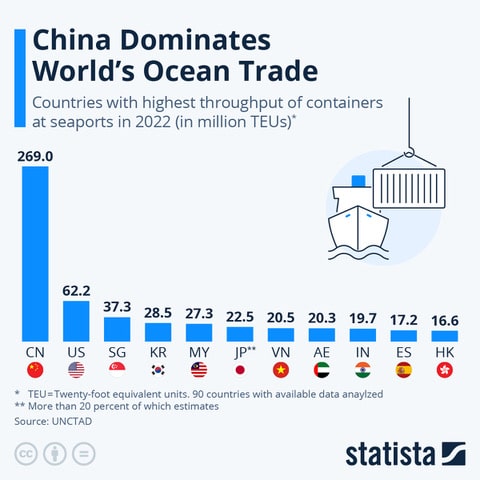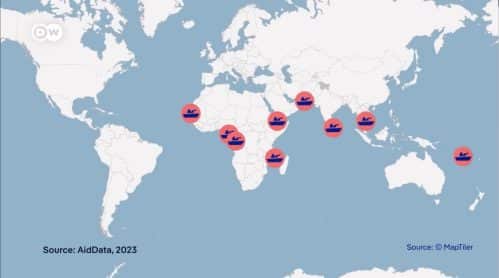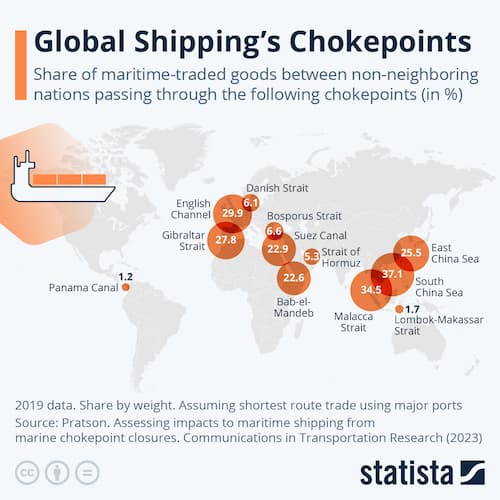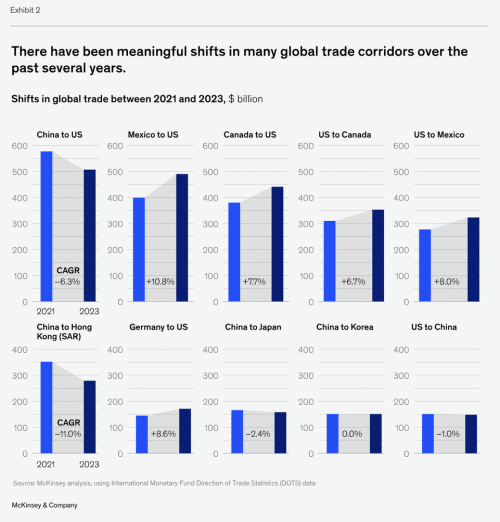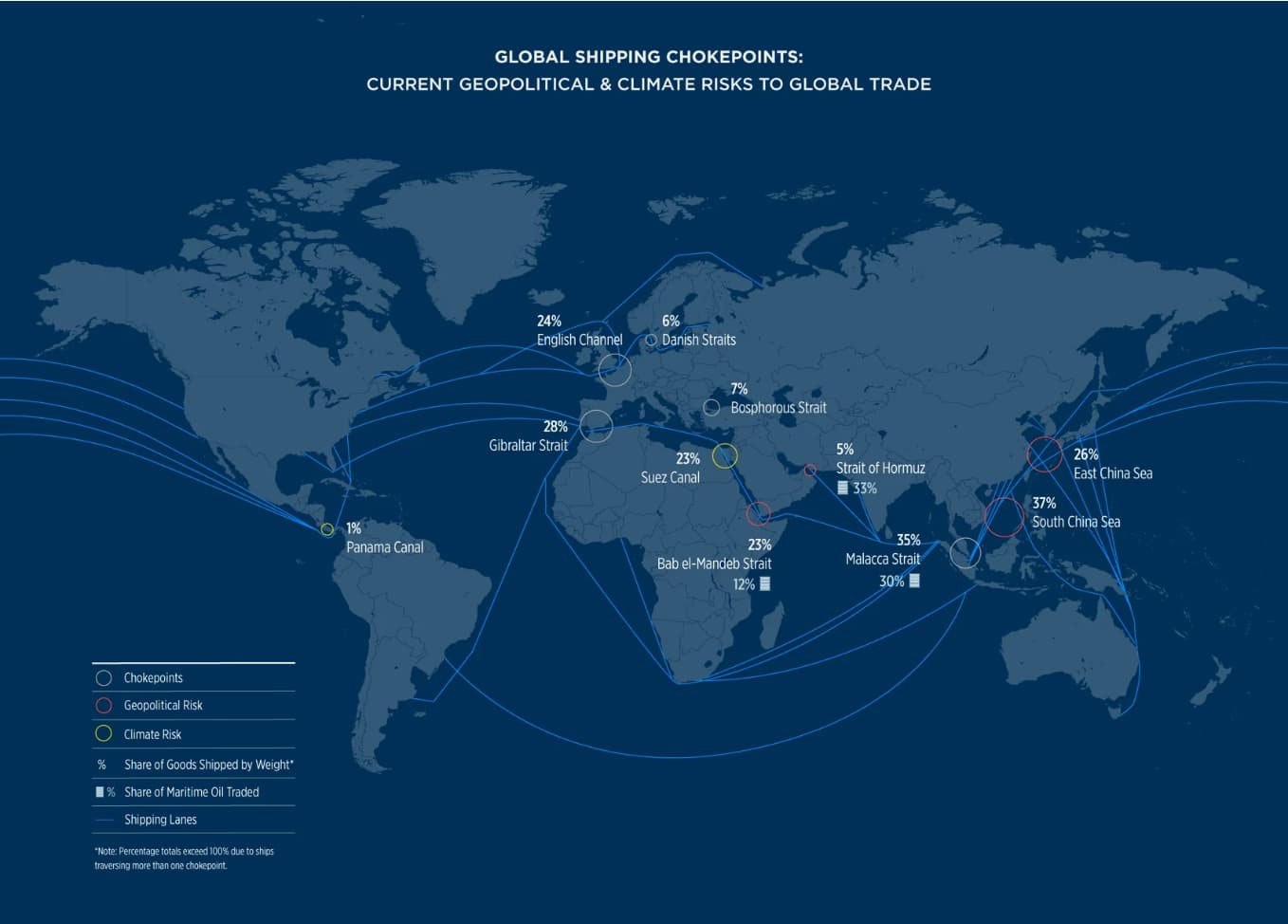Freight Routes are fragmenting. This may Indicate how the World is Fragmenting. Today, many countries are massively investing in new land-based freight routes, which could shift geopolitical power. This blog post is the first of five entries exploring freight routes.
Maritime Freight Dominates ...
Saltwater is the most critical infrastructure for global trade. According to the International Maritime Organization (IMO), 80-90% of global trade volume is transported by sea—mostly as bulk cargo (oil, grain, raw materials, metals, etc.) and the rest as container freight, typically finished goods.
… Mainly Because Land-Based Freight Is Critically Limited
Rail transport has long sought to compete but faces significant challenges. For one, rail freight is often 5-10 times more expensive than maritime transport, and rail capacity is critically limited. For example, Ukraine’s largest export, wheat, can only realistically be transported by sea. Neighboring countries’ rail networks (e.g., Poland and Romania) lack sufficient capacity, and in some cases, political reluctance hinders increased rail usage (notably in Hungary and Romania). Additionally, Ukraine’s rail system uses a Soviet-era track gauge that is 9 cm wider than the standard in the EU and much of the world, complicating connections.
This lack of rail freight capacity is a global issue. Maritime transport remains preferable because international waters offer the greatest security for uninterrupted delivery right to the destination.
But Maritime Freight Has Critical Choke Points ...
Sea transport also has bottlenecks that become evident during periods of geopolitical tension. Throughout history, freight corridors have been a foundation of geopolitical power. Nations either seek good relations with those controlling these corridors or aim to take control themselves to secure their supply chains.
Today, half of global trade passes through four major choke points:
- The Strait of Malacca, handling 30% of global trade with over 90,000 ships annually.
- The Suez Canal and the Bab-el-Mandeb strait, accounting for 12% of global trade with 20,000 ships.
- The Strait of Hormuz, through which 20% of global oil trade flows.
- The Panama Canal, facilitating 5% of global container trade with 14,000 ships annually.
… Which the World’s Largest Exporters Must Secure
China is the world’s largest user of maritime container traffic. Protecting this trade is of immense geopolitical interest, which drove the launch of the Belt and Road Initiative (BRI) in 2013, including significant investments in port infrastructure.
The U.S. Has Been the Global Leader Since WWII
Since World War II, the U.S. Navy has served as the global guarantor of security for the maritime status quo. This held until former President Trump’s more isolationist policy from 2017 onward. Trump has promised that his upcoming term will continue from where the last left off.
To free themselves from U.S. security guarantees, nations need their own naval power. China has significantly expanded its navy over the past 15 years, nearing the U.S. fleet in size. However, a navy also requires overseas ports, and China currently only has one in Djibouti. The country is expanding this facility and, according to AidData, identified eight BRI ports in 2023 that are being upgraded into naval ports within five years.
… Providing Power in a Fragmenting World
Over the past 3-4 years, “near-shoring” and “re-shoring” have led to slight declines in container freight volumes through these key nodes. This global decrease reflects trade fragmentation into three superzones— the U.S., China, and to some extent, the EU—with India as a potential fourth superzone. However, raw materials remain concentrated at relatively few global locations, maintaining stable growth in this sector.
For the foreseeable future, the world will remain dependent on the U.S. Navy for security. Countries wishing to break free of this security guarantee must first develop and secure alternative supply routes.
U.S. Withdrawal Creates Geopolitical Vacuums ...
Since the reintroduction of “America First” policies and the Monroe Doctrine in 2017, significant geopolitical shifts have occurred. This has led to massive investments in infrastructure, such as ports, canals, and railways. The winners in this game will be those nations that can best ensure domestic security and forge strong alliances with countries holding substantial foreign reserves, key investors.
Projects that come to fruition will hint at the deeper alliances emerging in the wake of trade fragmentation. Countries with the greatest cohesion will find it easier to secure funding, attract transit customers from third-party nations, and achieve the economic viability needed to sustain these initiatives.
… With Variations Across Key Nodes
In the past 5-6 years, numerous large-scale infrastructure projects have been initiated, with many in early construction phases. Key projects include:
- The Strait of Malacca (to be covered in the next blog post).
- The Suez Canal (discussed in the third blog post).
- The Panama Canal (explored in the fourth blog post).
- The Silk Road’s Middle Corridor (detailed in the fifth blog post).
